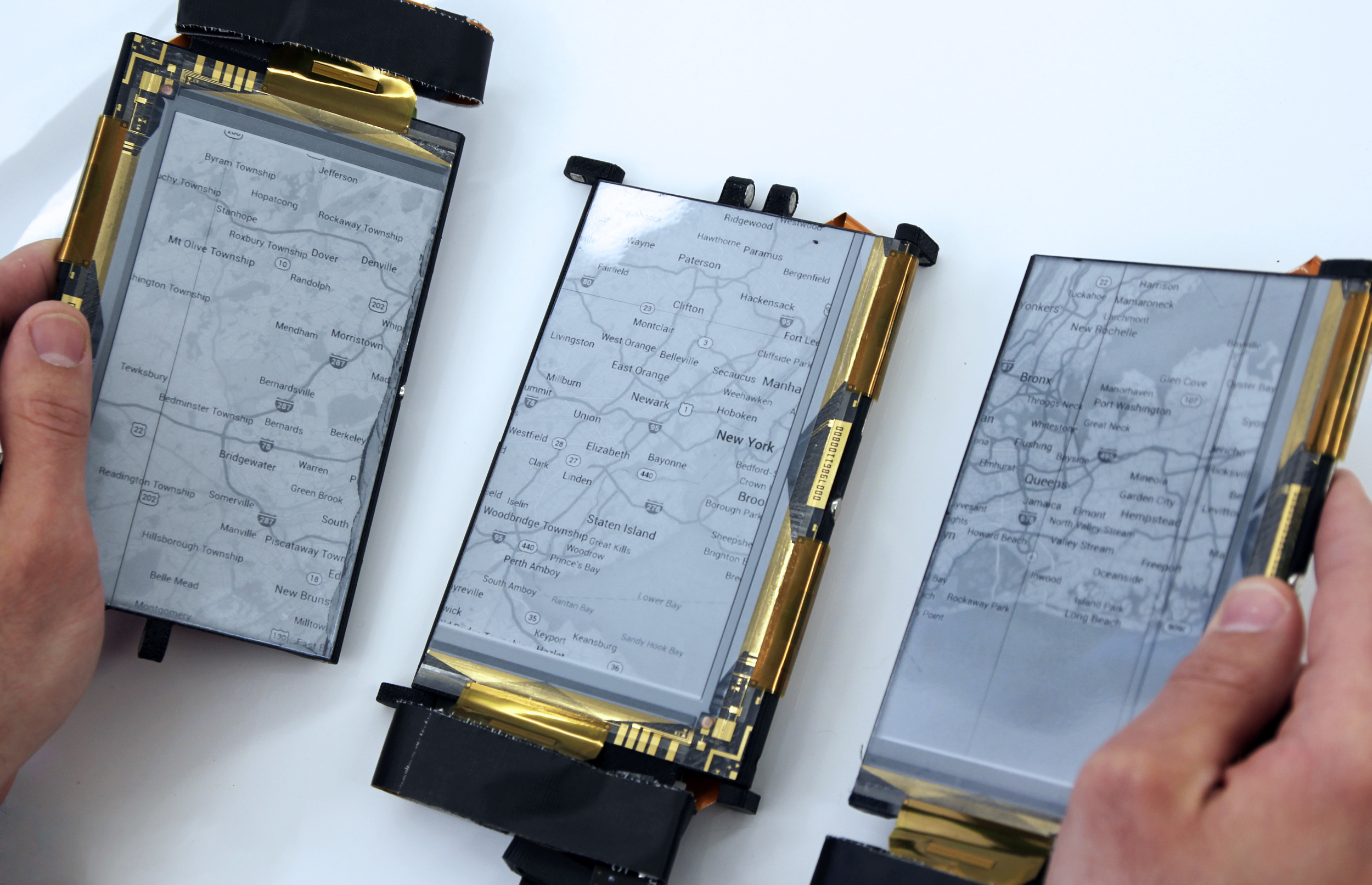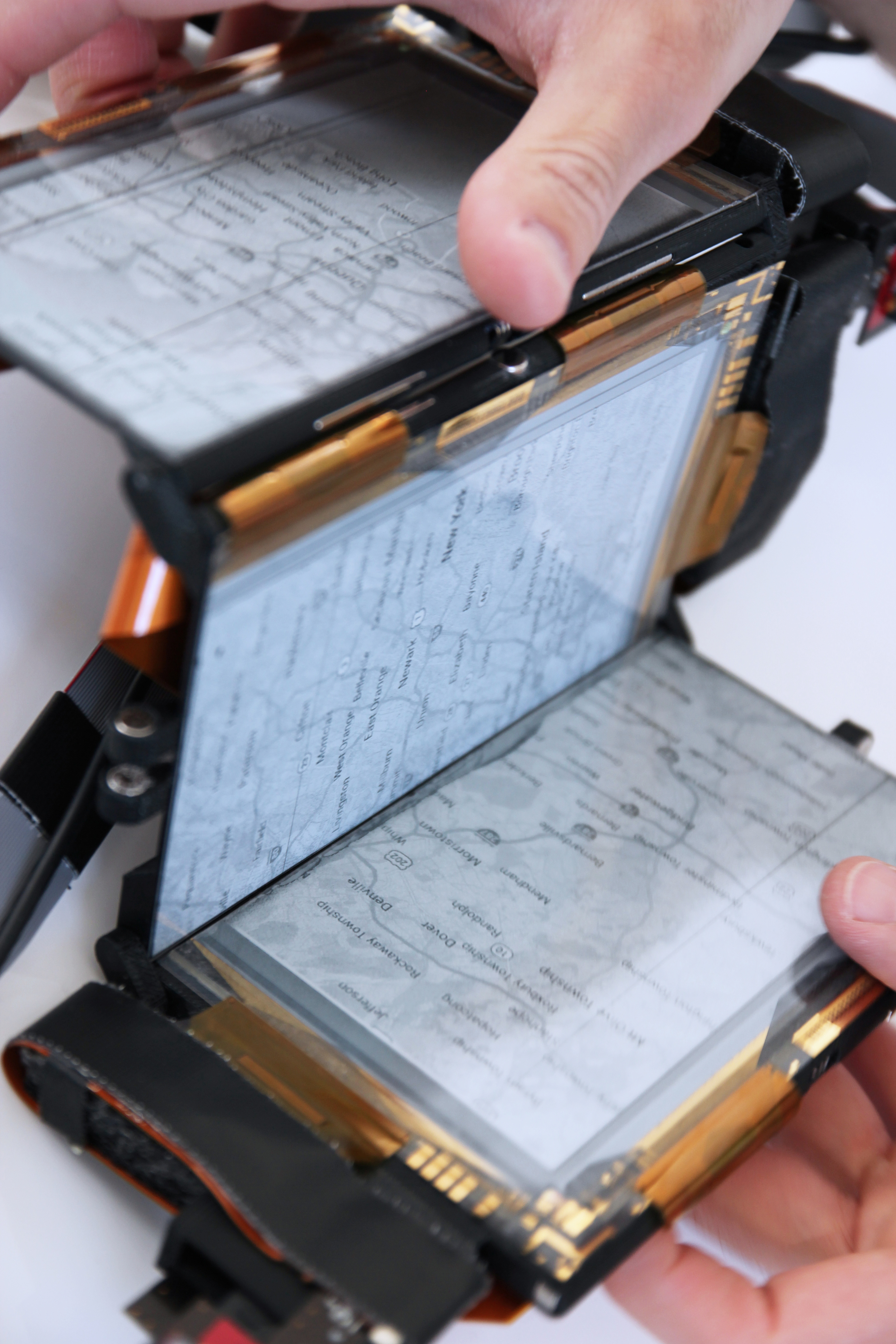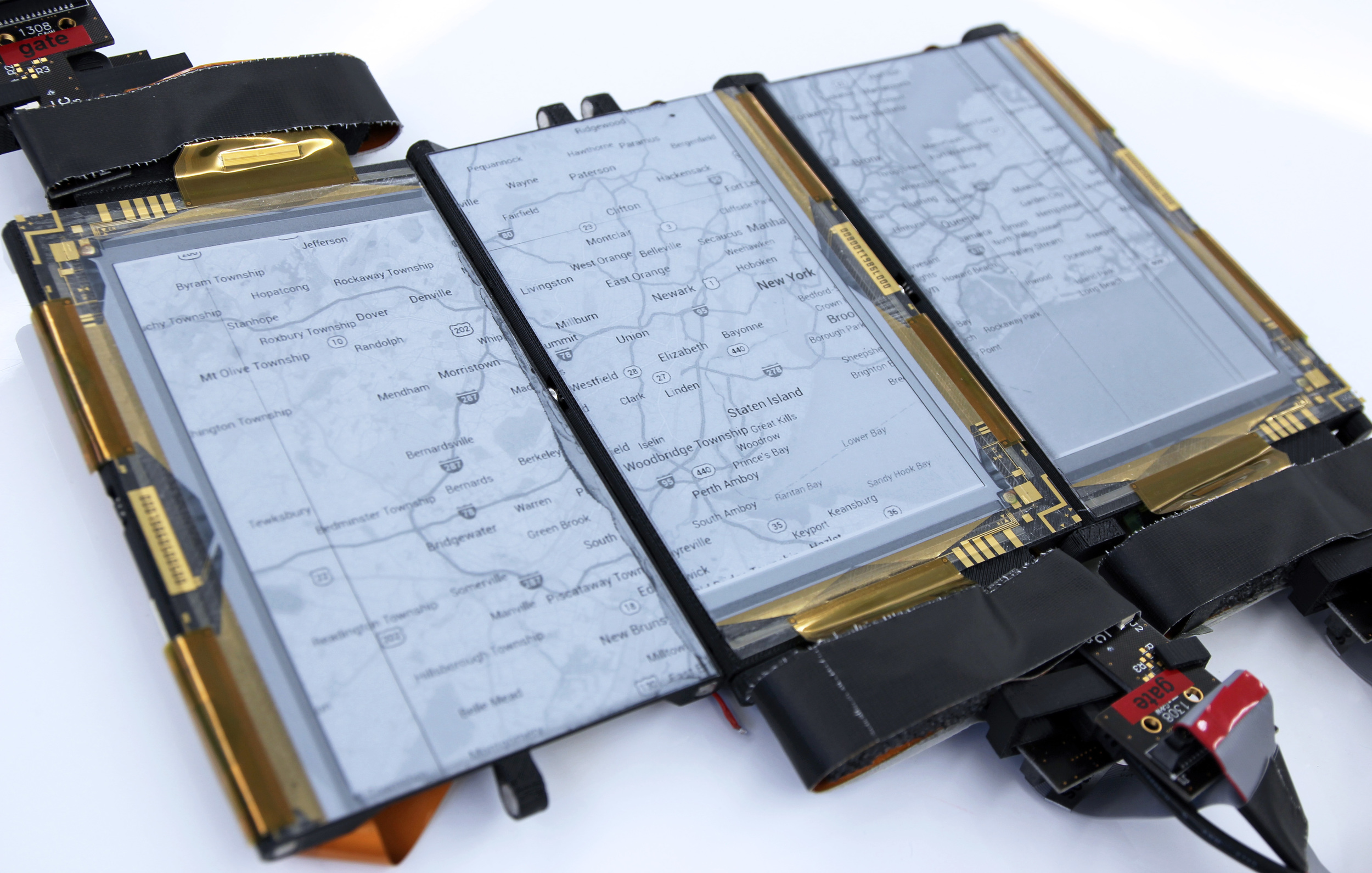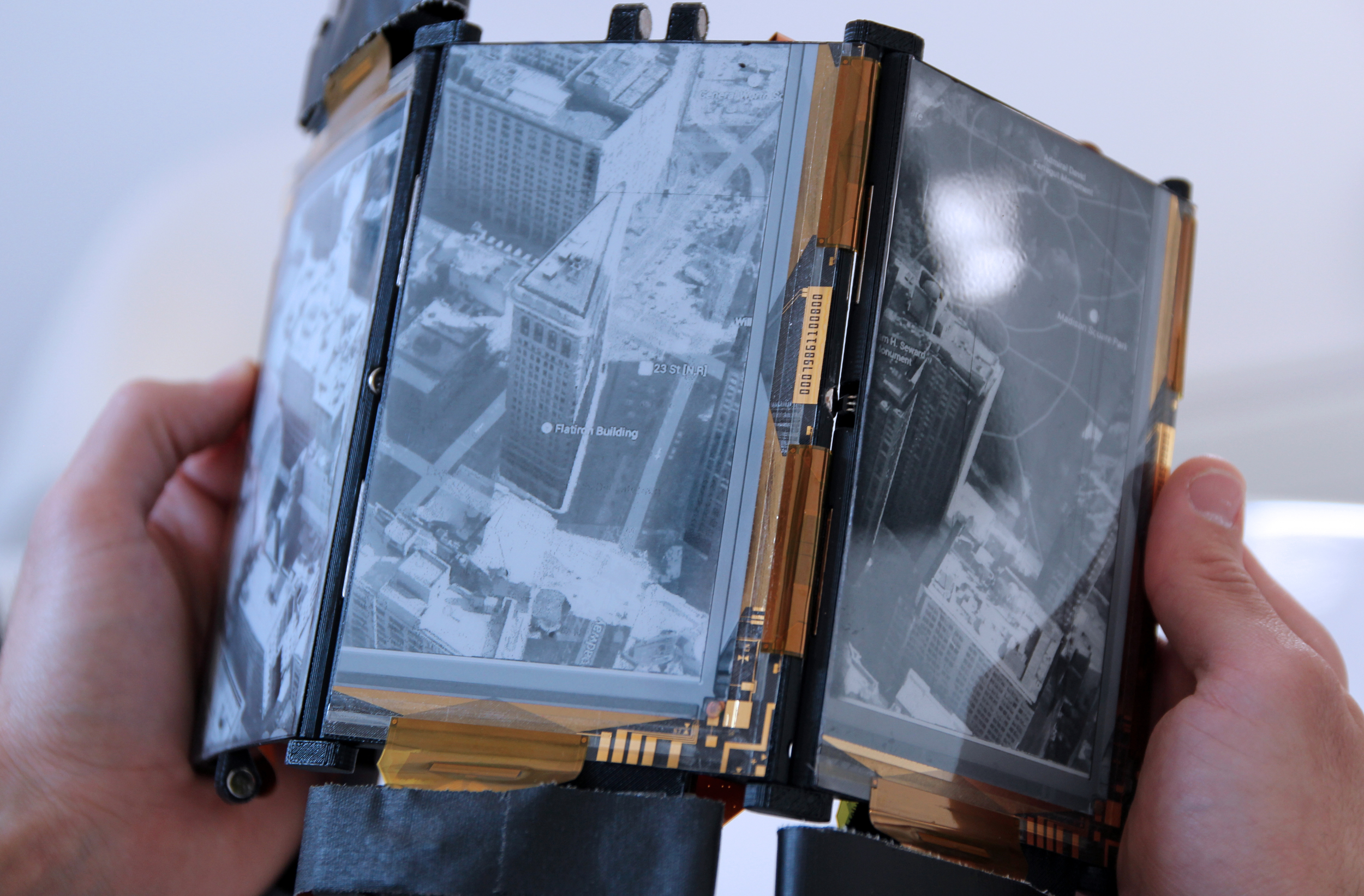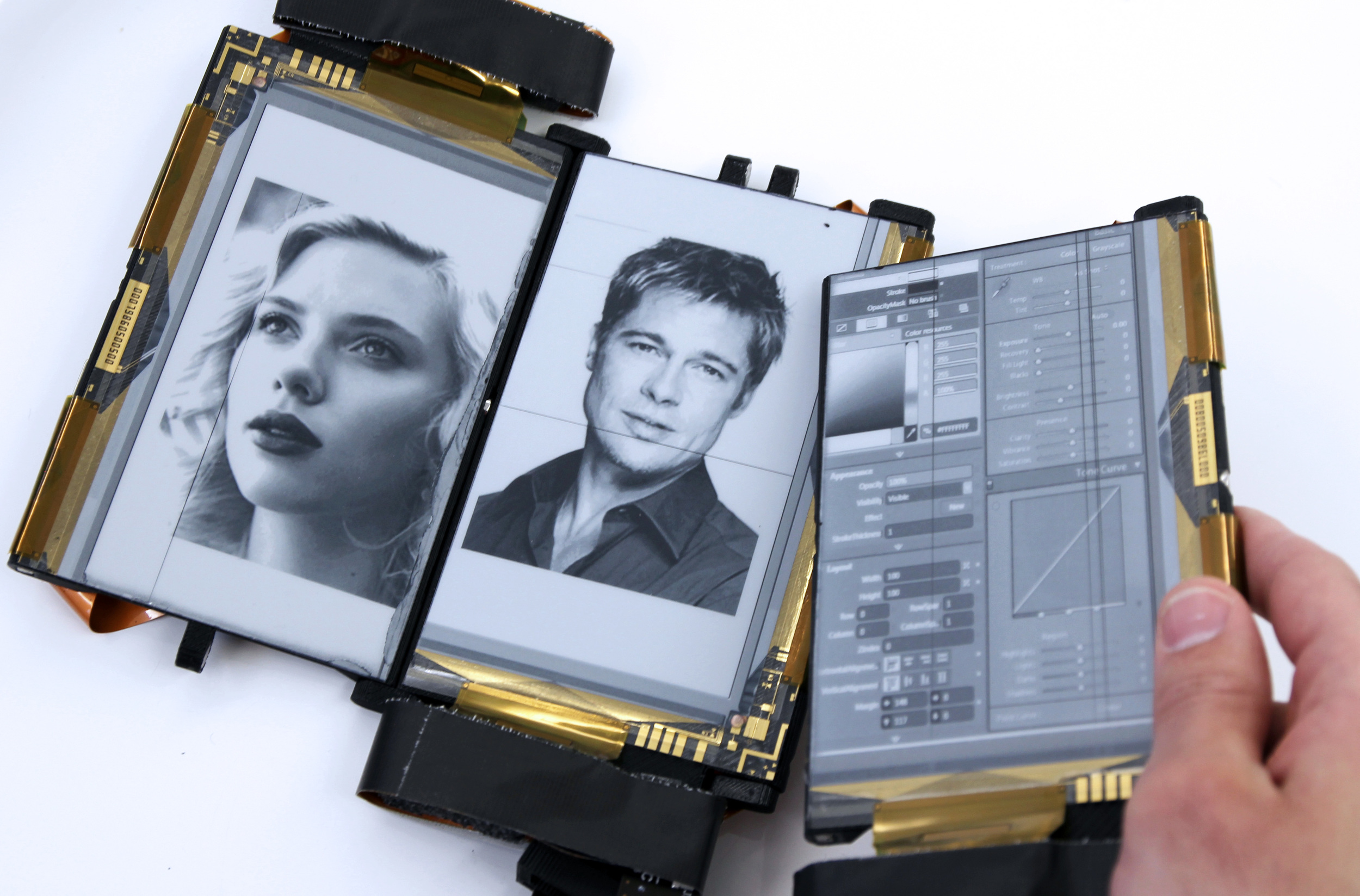Queen’s University’s Human Media Lab to unveil PaperFold at Toronto conference
KINGSTON ON – Queen’s professor Roel Vertegaal and student Antonio Gomes are unveiling PaperFold, a ground-breaking foldable smartphone. The technology is being released on Monday at the ACM CHI 2014 conference in Toronto – widely regarded as the most important conference on interaction techniques for new technologies.
The shape-changing smartphone allows users to fold open up to three flexible electrophoretic displays to provide extra screen real estate when needed. Displays are detachable such that users can fold the device into various shapes that can range from an ultra notebook shape to a foldout map.
“In PaperFold, each display tile can act independently or as part of a single system,” says Dr. Vertegaal, a professor in the School of Computing and Director of the Human Media Lab at Queen’s. “It allows multiple device form factors, providing support for mobile tasks that require large screen real estate or keyboards on demand, while retaining an ultra-compact, ultra-thin and lightweight form factor.”
PaperFold automatically recognizes its shape and changes its graphics to provide different functionality upon shape changes. For example, folding the device into an ultra notebook form factor opens up a keyboard on the bottom screen. Users could use this form factor to type a search, e.g., for an address on Google Maps – displayed on the top screen.
- By flattening PaperFold’s 3 displays, the user changes views to a Google map that spans all screens.
- Shaping PaperFold into a convex globe shows the map in Google Earth view.
- Folding PaperFold into the shape of a 3D building on the map will pick up a Google SketchUp model of the building and turn the device into an architectural model that can be 3D printed.
Inspiration for PaperFold came from its namesake: paper. Typically, mobile devices require scrolling or zooming in order to see different parts of a document whereas paper can be folded, detached or combined allowing it to be accessed in multiple parallel forms.
“The development of electronic paper computers that can adopt similar qualities to paper has been an enduring research goal for our team,” says Dr. Vertegaal. “Books use folding as both a navigational and space saving technique, and paper maps have malleable display sizes. The PaperFold smartphone adopts folding techniques that makes paper so versatile, and employs them to change views or functionality of a smartphone, as well as alter its screen real estate in a flexible manner. PaperFold demonstrates how form could equal function in malleable mobile devices.”
About Human Media Lab
The Human Media Lab (HML) at Queen’s University is one of Canada's premier Human-Computer Interaction (HCI) laboratories. Inventions include ubiquitous eye tracking sensors, Smart Pause, PaperPhone, the world’s first flexible phone and PaperTab, the world’s first flexible paper computer. HML is directed by Dr. Roel Vertegaal, Professor of HCI at Queen's University's School of Computing. Working with him is a number of graduate and undergraduate students with computing, design, psychology and engineering backgrounds.
See http://www.humanmedialab.org
Media Contact at Queen’s University
Rosie Hales
Communications Officer
Queen's University
Kingston, Ontario, Canada
Tel.: 613-533-6000 ext. 77513
Email: rosie.hales@queensu.ca
References
Gomes, A. and Vertegaal, R. PaperFold: A Shape Changing Mobile Device with Multiple Reconfigurable Electrophoretic Magnetic Display Tiles. In Extended Abstracts of ACM CHI’14 Conference on Human Factors in Computing. ACM Press, 2014. [PDF]
A high resolution video of PaperFold is available at the Human Media Lab’s YouTube channel:
Click on the below thumbnails for high resolution photos of PaperFold:

